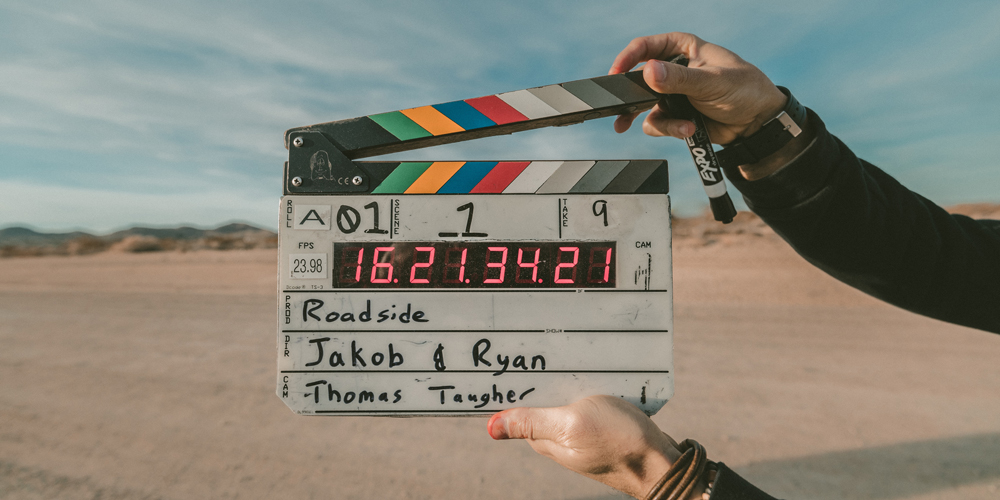While many lawyers might be comfortable speaking in front of a room of people, or even a big crowd, many become shy when a camera is involved.
Shyness makes their natural flow disappear, and things quickly snowball from there. On top of that, people fear any small mistake will be captured forever and no one likes hearing their voice on a recording. No. One.
But, if your law firm is to continue to stand out online, you and your team will need to learn to overcome these difficulties.
In fact, According to a Cisco report, video made up 75% of all online video content in 2017. This is set to reach 82% of internet traffic by 2022. As well as this, people spend 2.6x as long on websites that utilise video prominently.
Video is quickly becoming a mandatory element in helping your law firm stay competitive online.
To help you get started, Peter Mochrie, an Australian actor and presentation coach with over 40 years experience, has given five tips for better video presentations.
1. The message. The message. The message.
While editing can smooth out some presentation kinks, it’s important to know your material back to front and front to back.
Practising what you are going to say will help you feel more relaxed when it’s time to record, and this will come across on camera.
As well as this, knowing your material well will allow you to add in ‘ad-libs’, which will make you come across more naturally.
Not sure if you’re ready? Grab your phone and film yourself to see how you come across. If you’re spending more time looking at your notes than the screen, you’re probably not ready.
Speaking of…
2. Speak as if you were having a one-on-one conversation
Video is an amazingly personal communication method. You’ll nearly always be speaking to just one person watching the screen, as if it were a one-on-one conversation
It’s important to remember this when you’re speaking to camera, starting with ‘eye’ contact – you should be looking in the direction of the lens or, even better, directly into it.
You also get more with sugar than you do with vinegar. Speaking with a smile not only lifts your tone of voice but makes you far more approachable. Try to have a conversation with just one person in the camera and smile when you can.
3. Slow down and breathe.
Because people don’t like talking on camera, they often rush through what they have to say. This makes them look hurried or, at worst, indifferent or frustrated.
In order to communicate confidently and clearly, it’s important to slow down and pace your speaking.
This all starts with the breath. Consciously take a few breaths before you start speaking and remember to take a breath between each idea.
I cover breathing techniques that calm the brain and relieves anxiety, however, you can take a look at this 3-minute audio-clip which covers a breathing technique used by singers.
4. You do you (and enjoy it)
There’s no need to try and put on a persona for the camera. If you are yourself, and more importantly, if you’re enjoying yourself, people will respond to you and your message.
Being honest is far more memorable than acting like everyone else does. It’s better to let yourself shine through (with all your particular oddities) than try to do something your not.
Saying that however…
5. Maybe hold off on that crazy shirt
Your special shirt or blouse may not be the best for being on film.
Some patterns will cause a distortion on camera – whether it’s stripes, patterns, blocks of colour or mambo.
When you’re on camera it’s best to stick to solid colours. That doesn’t mean they have to be boring though!
Overall though, get filming
It’s all well and good to read about speaking on camera, but the best way to learn is to get out there and speak on camera! Make mistakes, dust yourself off and try it all over again. And while you’re at it, try and have some fun. Filming even the smallest piece of business content is a nice change for many of us stuck to a desk from nine to five.
About the author
Peter Mochrie has enjoyed great success as one of Australia’s leading Actors and his career spans over forty years. Since he graduated from NIDA in 1989 he has been coaching corporate professionals from CEO’s, business employees, students and artists wishing to present their work in ever competitive conditions. Peter teaches, guides and directs to achieve your greatest potential to present on a broad spectrum of platforms.
For information on his Art of Presenting Workshop, please call Peter on 0478 921 400 or fill in the enquiry form.

